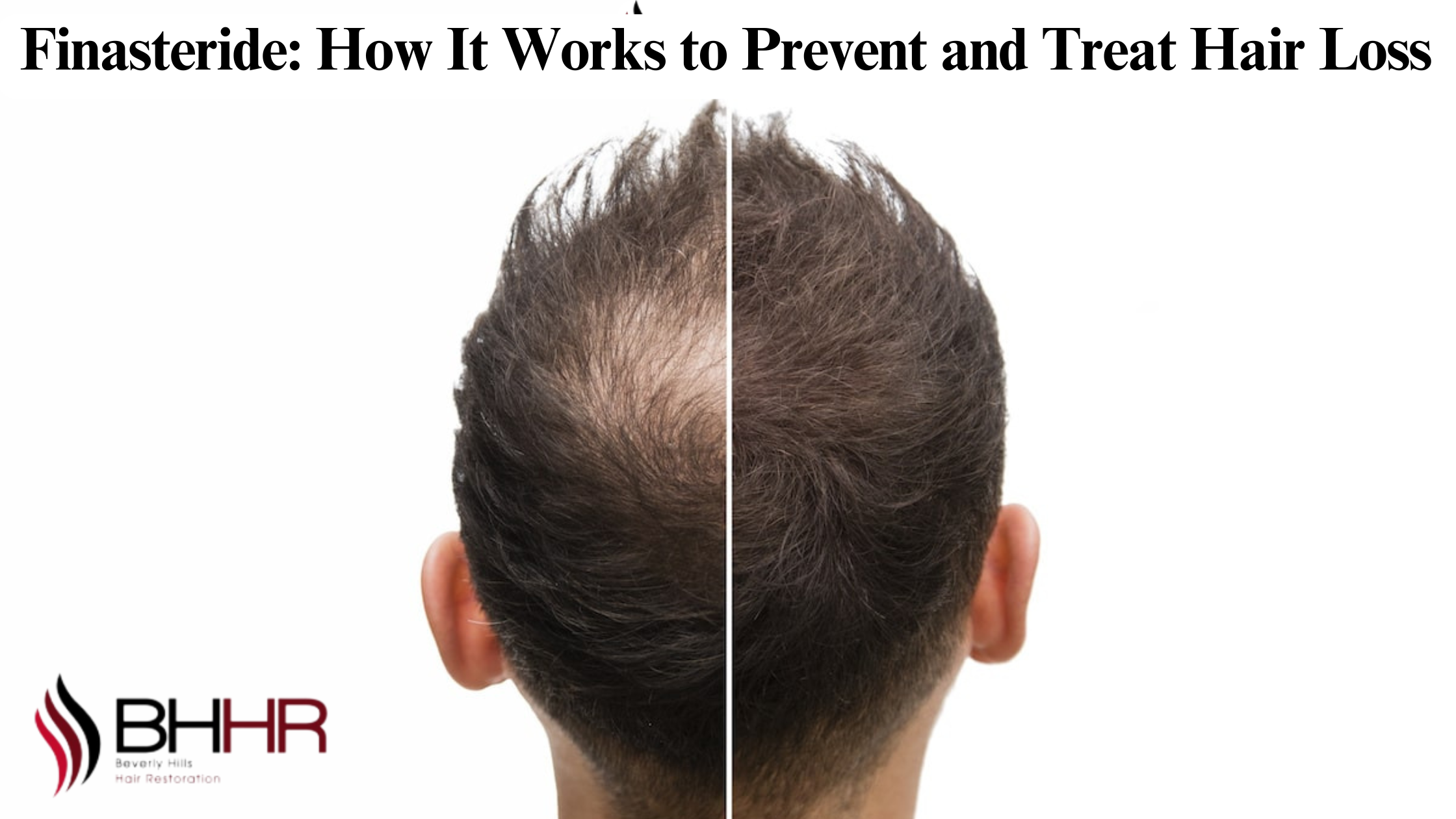Hair loss can be a painful affair, affecting both confidence and self-image. Among the various treatments available, finasteride stands out for its effectiveness. But how does finasteride work to prevent and treat hair loss? This medication targets a key player in hair loss, offering solutions to those struggling with thinning hair or bald patches. In this article, we’ll explore the science behind finasteride, its benefits, and how it can help you maintain a fuller head of hair.
What is Finasteride?
1. Definition and Background
Finasteride is a drug mainly used to treat conditions related to the prostate and hair loss. It was initially developed in the early 1990s to address benign prostatic hyperplasia (BPH), a condition where the prostate gland becomes enlarged. However, during clinical trials, it was discovered that finasteride also significantly affected hair growth, leading to its use in treating hair loss.
2. Medical Uses
Today, finasteride is most commonly prescribed for two main conditions:
- Benign Prostatic Hyperplasia (BPH): By reducing the size of the prostate, finasteride helps alleviate symptoms such as frequent urination and difficulty starting urination.
- Androgenetic Alopecia: This refers to male and female pattern baldness. Finasteride is used to slow or stop hair loss and, in many cases, promote regrowth.
How Does Finasteride Work?
1. Mechanism of Action
One must know a bit about hormones and their role in hair loss to understand how finasteride works. The primary mechanism behind finasteride’s effectiveness is its ability to inhibit an enzyme known as 5-alpha reductase.
2. The Role of 5-alpha Reductase
5-alpha reductase is an enzyme that transforms testosterone, a key male hormone, into dihydrotestosterone (DHT). DHT is a better powerful form of testosterone and is nearly linked to hair loss. In individuals genetically predisposed to androgenetic alopecia, high levels of DHT cause hair strands to shrink, showing to thinner hair and, ultimately, hair loss.
3. Impact on DHT Levels
By inhibiting the 5-alpha reductase enzyme, finasteride effectively reduces the production of DHT. This reduction in DHT levels helps to stop the shrinkage of hair follicles and promotes hair regrowth. Clinical studies have shown that finasteride can lower DHT levels by up to 60-70%, making it a powerful tool in combating hair loss.
Finasteride for Hair Loss
1. Role in Treating Male Pattern Baldness
Male design baldness, or androgenetic alopecia, is men’s most familiar type of fur loss. It generally starts with a receding hairline or thinning at the height and can progress to complete baldness. Finasteride is highly effective in treating this condition.
2. Effectiveness for Women
Finasteride is also prescribed to women, particularly those who undergo hair loss due to hormonal differences. However, it’s less commonly used for women compared to men. The effectiveness can vary, and it’s often considered only after other treatments have been tried. Women who are pregnant or intending to evolve pregnant should bypass finasteride due to potential risks to the fetus.
Benefits of Using Finasteride
1. Hair Regrowth
One of finasteride’s most significant benefits is its ability to stimulate hair regrowth. For many users, this means not just halting hair loss but regrowing hair that was previously lost. Clinical trials have demonstrated that many men experience noticeable hair regrowth when using finasteride.
2. Prevention of Further Hair Loss
Finasteride also plays a crucial role in preventing further hair loss. Reducing DHT levels helps to stabilize existing hair follicles, preventing them from becoming inactive. This means that you cannot only regrow hair but also preserve the hair you already have.
Who Should Use Finasteride?
1. Ideal Candidates
Finasteride is most effective for individuals with early to moderate hair loss. It is particularly suited for men with male pattern baldness experiencing thinning or receding hairline. For women, it’s often used as a secondary option when other treatments have not been effective.
2. Who Should Avoid It
Certain groups should avoid finasteride, including:
- Pregnant Women: Finasteride can potentially harm a developing fetus. Women who are expectant or planning to evolve pregnant should not use finasteride.
- Individuals with Certain Medical Conditions: Those with liver disease or other health problems should confer their doctor before starting finasteride.
How to Use Finasteride Effectively
1. Dosage Recommendations
The typical dosage for treating hair loss is 1 mg per day. It’s important to take finasteride consistently to achieve the best results. Skipping doses or discontinuing treatment can reduce its effectiveness.
2. Tips for Maximizing Results
To get the most out of finasteride:
- Stick to the Schedule: Take your medication simultaneously daily to help you remember and maintain consistency.
- Combine with Other Treatments: Finasteride with other hair loss treatments, like minoxidil, can enhance overall results.
- Be Patient: Hair regrowth can take several months to become noticeable. It’s important to be patient and continue using the medication as directed.
Consulting with Your Doctor
1. Importance of Medical Guidance
Before starting finasteride or any new medication, it’s essential to consult with your doctor. They can help determine if finasteride is appropriate for you based on your medical history, hair loss pattern, and overall health.
2. What to Discuss with Your Doctor
When discussing finasteride with your healthcare provider, consider addressing the following:
- Your Hair Loss Concerns: Share details about your hair loss pattern and how it affects you.
- Current Medications: Notify your doctor regarding any other medicines or supplements.
- Potential Side Effects: Discuss any concerns about possible side effects and how they might impact you.
Conclusion
Finasteride is a powerful medication that has proven effective in treating hair loss for many people. By understanding how it works—through its action on DHT levels—you can appreciate why it’s such a popular choice for managing hair thinning and baldness. Whether considering finasteride as a standalone treatment or as part of a broader hair restoration strategy, consulting with your healthcare provider is crucial to ensuring that it aligns with your needs and health status. For more detailed information on finasteride and its benefits, you can visit Beverly Hills Hair Restoration.


